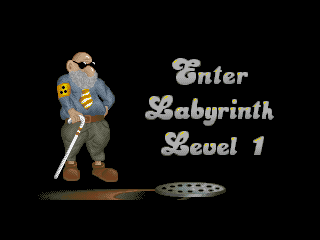Retro Replay Review
Gameplay
Blind People Simulator offers a refreshingly unique gameplay experience by stripping away traditional visual cues and relying entirely on directional audio. As with the later Shades of Doom, you must navigate an enemy-filled maze, locating obstacles, hazards, and opponents solely through subtle sound effects. This design forces you to hone your ears, making every footstep, distant gunshot, or ambient noise a crucial piece of information. The result is a tense, immersive challenge that rewards patience and acute listening skills.
(HEY YOU!! We hope you enjoy! We try not to run ads. So basically, this is a very expensive hobby running this site. Please consider joining us for updates, forums, and more. Network w/ us to make some cash or friends while retro gaming, and you can win some free retro games for posting. Okay, carry on 👍)
The control scheme is intuitive yet precise. Movement, aiming, and interactions feel responsive, ensuring that your focus remains on interpreting audio feedback rather than wrestling with complicated inputs. You quickly learn to differentiate between the reverberation of a hallway and the distinct echo of a nearby guard’s footsteps. Over time, these auditory breadcrumbs coalesce into a mental map of your surroundings, guiding your decisions and heightening every encounter.
Combat encounters are particularly satisfying because they rely on sound triangulation. Taking down an enemy involves anticipating movement patterns and timing your shots, rather than lining up a crosshair on a visual target. Stealth sections amplify the tension—closing in on a silent adversary, carefully avoiding noisy surfaces, and praying that the faintest rustle doesn’t give away your position. This emphasis on audio-driven gameplay creates an experience unlike anything you’ve tried in conventional shooters.
Graphics
Surprisingly, Blind People Simulator doesn’t neglect visuals entirely, even though they play a secondary role. The minimalistic graphics serve to complement the audio-focused design, rendering environments in muted colors and simple geometries. These stripped-down visuals prevent distractions and reinforce the notion that your ears, not your eyes, are the primary tool for survival.
Textures and lighting are intentionally understated. Shadows and shapes are conveyed through basic shading rather than detailed textures, ensuring that players familiar with traditional shooters won’t be enticed to rely on what they see. This deliberate approach underscores the core mechanic: trusting audio cues over visual fidelity. It’s a bold stylistic choice that may seem barren at first, but quickly becomes an integral part of the game’s identity.
Performance is generally stable, with minimal frame drops or graphical glitches even in complex audio-driven scenarios. The game’s modest system requirements make it accessible to a wide range of players, and the lack of intensive visual effects ensures a smooth experience across most hardware configurations. While it won’t win awards for photorealism, Blind People Simulator’s visuals are perfectly aligned with its audio-centric ambitions.
Story
The narrative in Blind People Simulator is deceptively simple, allowing the innovative mechanics to shine without getting bogged down in convoluted plot details. You assume the role of a sight-impaired operative tasked with infiltrating a high-security facility to retrieve critical data. The premise provides enough context to justify the gameplay loop and sustains your motivation as you delve deeper into each level’s winding corridors.
Storytelling unfolds primarily through audio logs, environmental audio cues, and brief voiceovers. Hidden recordings reveal snippets of the facility’s dark secrets and the moral ambiguity of your mission, while distant echoes of guard chatter hint at larger conspiracies. The sparse narrative style invites you to piece together events in much the same way you navigate the maze—by listening closely and drawing your own conclusions.
Although the plot lacks extensive character development, the minimalism works in its favor. It prevents the audio-driven gameplay from feeling gimmicky and instead frames it as an integral part of the world. Every new log entry or overheard conversation carries weight, adding emotional resonance to your solitary audio-guided journey. For players who appreciate storytelling delivered through environmental detail rather than cutscenes, this approach hits the mark.
Overall Experience
Blind People Simulator stands out as one of the boldest experiments in auditory gameplay to date. By removing the crutch of visuals, it challenges players to engage with sound design on a level rarely seen in mainstream titles. The result is a fascinating blend of tension, immersion, and strategic depth that will appeal to those seeking a novel twist on the FPS genre.
That said, this game isn’t for everyone. Players who prefer fast-paced, visually spectacular shooters may find its minimalist graphics and reliance on audio cues frustrating or inaccessible. A willingness to adapt to a slower, more deliberate pace is essential. But for auditory enthusiasts, simulation fans, and anyone curious about innovative game design, Blind People Simulator delivers an experience that is as challenging as it is rewarding.
Ultimately, the game’s success lies in its unwavering commitment to its core concept. It transforms potential limitations into strengths and proves that hearing can be as powerful as sight when it comes to immersive gameplay. If you’re ready to put your ears to the test and embrace a fresh perspective on maze navigation and combat, Blind People Simulator is an adventure worth embarking on.
 Retro Replay Retro Replay gaming reviews, news, emulation, geek stuff and more!
Retro Replay Retro Replay gaming reviews, news, emulation, geek stuff and more!






Reviews
There are no reviews yet.